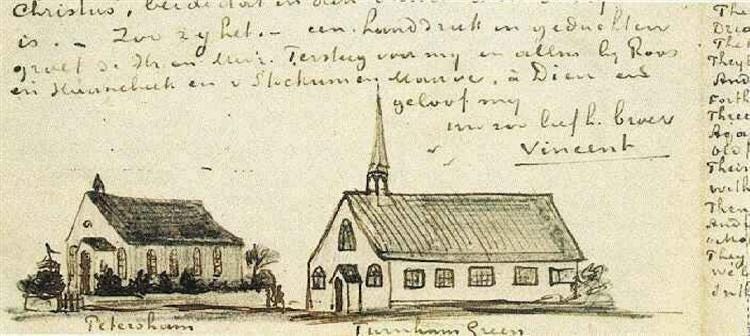Business Development in Biotech
Life sciences strategy
Axial: https://linktr.ee/axialxyz
Axial partners with great founders and inventors. We invest in early-stage life sciences companies such as Appia Bio, Seranova Bio, Delix Therapeutics, Simcha Therapeutics, among others often when they are no more than an idea. We are fanatical about helping the rare inventor who is compelled to build their own enduring business. If you or someone you know has a great idea or company in life sciences, Axial would be excited to get to know you and possibly invest in your vision and company. We are excited to be in business with you — email us at info@axialvc.com
Business development plays a critical role in the biotech industry. For early-stage biotech companies, business development is essential to securing the funding and partnerships needed to advance research and development. More established biotechs also rely heavily on business development to obtain access to new technologies, products and markets through licensing deals, mergers and acquisitions.
There are several key ways that business development creates value in biotech:
Securing startup funding - early-stage biotechs need significant capital to get off the ground. Business developers are tasked with pitching the company's science and vision to venture capital firms, corporate venture groups and angel investors. Successfully raising a Series A or seed round can validate the company's potential and enable it to hire key scientists, rent lab space and begin R&D.
Establishing corporate partnerships - biotechs partner with larger drug and biotech companies to access capabilities and resources they lack. Common deals include R&D collaborations, licensing agreements, co-development arrangements and manufacturing contracts. Partners provide funding, supplement scientific expertise and give smaller firms leverage in negotiating with other players. For the larger partner, these deals grant access to innovative technologies and products.
Supporting product development - business developers craft partnering strategies aligned to the biotech's pipeline and portfolio. Early R&D deals and milestones financing can fund proof-of-concept studies. Later-stage licensing agreements support regulatory approval, manufacturing and commercialization. Orphan drug incentives may be secured to extend market exclusivity. The business development team works closely with R&D leaders to coordinate programs.
Enabling commercialization - as biotechs approach commercial launch, business development focuses on putting the company in the best position to maximize product uptake. Regional licensing deals grant partners commercial rights in certain geographies. Co-promotion agreements enlist a partner's large salesforce. Out-licensing deals hand off the product entirely in exchange for royalties. Business developers weigh options to balance revenue generation, risk, capabilities and control.
Diversifying technology platforms- many biotechs seek to broaden their science into adjacent spaces, like moving from antibodies into cell therapy. Business development scouts for technologies to license or startups to acquire that build the company's platform. Adding complementary capabilities can open up new partnering and funding opportunities.
Identifying M&A targets - as biotechs grow, M&A becomes a major business development focus. Acquiring a clinical-stage biotech can instantly expand the pipeline. Buying a commercial-stage company provides revenue streams. Technology-focused deals bring in new R&D capabilities. Integration challenges mean business developers must validate deal rationale and valuation models.
Navigating company exits - business developers often lead exit planning and negotiations. They assess buyer interest, model potential deal terms and negotiate with partners. For an IPO exit, they coordinate roadshow meetings with investors. In M&A, they negotiate with acquirers, balancing offers and deal structure. Business developers aim to maximize exit valuation while mitigating execution risks.
Given this broad scope, an effective biotech business development team requires a mix of scientific, financial, legal and partnering acumen. Deep disease area knowledge is needed to evaluate early-stage opportunities. Dealmakers blend strategic thinking with creative negotiating skills. An entrepreneurial mindset helps identify and pursue novel structures. The role sits at the intersection of R&D, commercial and corporate strategy functions. Certain business development strategies can be particularly impactful at specific phases of the biotech lifecycle:
Startup phase: Early business development wins like a first venture round, corporate seed funding or academic license deal build credibility. Many pitches to potential partners include the company's fundraising slide deck. Business developers must balance raising enough capital with avoiding too much dilution.
Preclinical phase: This phase is about leveraging corporate R&D partnerships to fund proof-of-concept studies for lead candidates while advancing additional pipeline assets. "Built-to-buy" startups may focus on deals likely to impress future acquirers. Milestones-based deals allow more value to be retained.
Clinical phase: Mid-stage clinical data opens more partnering options, like regional licensing deals to enter certain markets. Co-development can supplement in-house capabilities as programs progress to late-stage trials. Some biotechs are acquired once reaching this mature, yet still risky, stage.
Approval phase: Priority is on commercial-focused partnering to support regulatory submissions, build manufacturing capacity and expand reach. Full out-licensing is an option, or co-promotion to retain some control. Business developers initiate exit planning.
Commercial phase: With commercial operations underway, business developers aim to extend market access and lifecycle management via line extensions and label expansions. Acquiring a complementary commercial-stage asset could diversify revenue. The company may explore exit options like an IPO or sale.
Business development is more art than science. A standard biotech partnering playbook does not exist. Dealmakers must adapt strategies to the company's particular strengths, pipeline, resources and goals. But ultimately, the success of a biotech business development organization is measured by its ability to craft partnerships that fuel the company's growth and maximize long-term value. This requires creativity, tenacity, executive engagement and a willingness to take calculated risks. In dynamic biotech markets, the companies that master business development will maintain their competitive edge.


